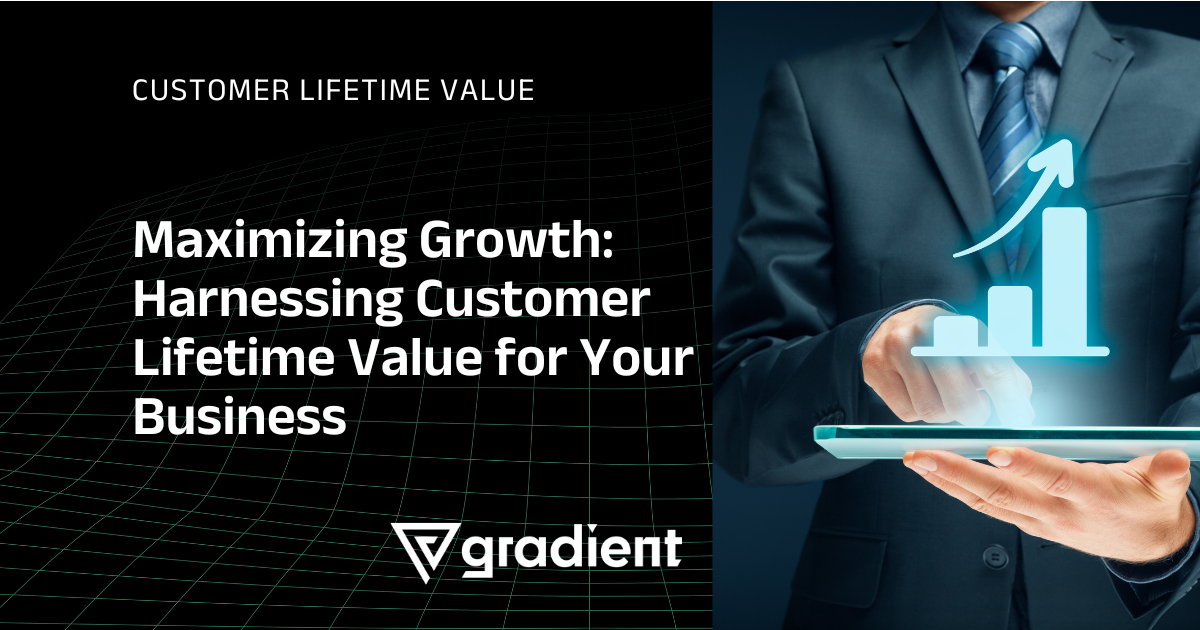In the relentless world of business, where every penny counts, it's crucial to not just chase new customers but also nurture and pamper the ones you've already got. Enter customer lifetime value (CLV), our not-so-secret weapon to boost your business's growth. In this blog post, we'll break down CLV, explore its relationship with customer acquisition cost (CPA), and reveal how you can use it to:
- Supercharge your marketing strategies,
- forecast sales like a clairvoyant,
- and even evaluate your business's overall worth through customer-based corporate valuation (CBCV).
Understanding Customer Lifetime Value (CLV)
Customer lifetime value (CLV) is like a treasure map guiding your business toward a pot of gold. It quantifies the total revenue a business can expect to earn from a customer throughout their entire relationship. Think of it as a road map that stretches beyond individual transactions, focusing on the long-term value of customers. In essence, it answers the question, "How much will this customer contribute to our bottom line over their entire engagement with us?"
Now, let's explore the relation between CLV and customer acquisition cost (CPA). CPA represents the resources, both financial and otherwise, required to acquire a new customer. Here's where it gets interesting: the magic happens when CLV exceeds CPA. When the revenue generated from a customer over their lifetime surpasses what it cost to bring them on board, you've struck gold.
Imagine you're running an e-commerce business. If the average CLV of your customers is $500 and your CPA is $300, it's like buying a ticket to a blockbuster movie for just a fraction of the price. Your business becomes a box office hit, as you're generating a profit that keeps growing with every repeat visit from your customers.
How to Calculate and Predict CLV
Before we dive into the advanced world of "Buy Till You Die" (BTYD) models, let's start with some simpler methods for calculating and predicting CLV:
1. Historical CLV Calculation:
- Sum up the total revenue generated by a customer over a defined period.
- Divide it by the number of customers acquired during that period.
2. Cohort Analysis:
- Group customers based on their acquisition date.
- Track the revenue generated by each cohort over time to identify trends.
While these methods provide valuable insights into customer behavior, they have limitations. They don't account for variations in customer behavior, such as changes in purchase frequency or recency. That's where advanced models like BTYD come into play.
The "Buy Till You Die" Model: Why It's Necessary
So, why do we need the BTYD model? It's like upgrading from a basic flip phone to a smartphone—it offers greater precision and sophistication. While simpler methods provide a rough estimate of CLV, BTYD models consider intricate factors like purchase frequency, recency, and monetary value. They predict how long a customer is likely to stay active and how much they'll spend during that time.
By applying the BTYD model, businesses gain a deeper understanding of their customers' value over time. This knowledge empowers them to make data-driven decisions about marketing, resource allocation, and customer retention efforts.
In the following section, we'll explore how the BTYD model works in practice and why it's a game-changer for CLV predictions.
Implementing the BTYD model in practice
Step 1: Historical Data Collection
The first step in implementing the BTYD model is to gather historical transaction data. This data should include information on customer purchases, such as:
- Purchase Date: When did the customer make each purchase?
- Transaction Amount: How much did the customer spend on each purchase?
- Customer ID: Unique identifiers for each customer.
This historical data provides the foundation for understanding past customer behavior, which is crucial for predicting future behavior.
Step 2: Calculating Key Metrics
With the historical data in hand, you'll need to calculate several key metrics that are fundamental to the BTYD model:
- Recency: Recency refers to how recently a customer made their last purchase. Calculate this metric for each customer by finding the time elapsed between their most recent purchase and the present date. This helps determine how engaged and active the customer currently is.
- Frequency: Frequency represents how often a customer makes purchases within a specific time frame. Calculate this metric by counting the number of transactions made by each customer during a defined period. This quantifies their purchasing habits.
- Monetary Value: Monetary value reflects how much a customer spends on average per transaction. Calculate this metric by dividing the total revenue generated from a customer by the number of transactions they've made. It provides insights into their spending behavior.
Step 3: Model Selection
The BTYD model encompasses various submodels, with the Pareto/NBD and BG/NBD models being among the most widely used. You'll need to choose the most suitable submodel based on the characteristics of your data and the specific questions you want to answer. Each submodel has its strengths and assumptions, so selecting the right one is crucial.
Step 4: Parameter Estimation
Once you've chosen a submodel, the next step is to estimate its parameters. These parameters include previously explained elements like purchase frequency, recency, and monetary value. Estimating these values is typically done through statistical techniques, such as maximum likelihood estimation (MLE), which aims to find the parameter values that best fit your historical data.
Step 5: Predicting Future Behavior
With the parameters estimated, you can now use the BTYD model to predict future customer behavior. This includes forecasting:
- Customer Lifetime: represents the expected duration a customer will remain active. It's calculated based on the recency and frequency values, indicating how long the customer is likely to keep purchasing from your business.
- Future Purchase Probability: The BTYD model provides probabilities of a customer making future purchases within different time intervals. For example, you can predict the probability of a customer making a purchase within the next week, month, or year.
- Expected Future Transactions: By combining the predicted purchase probabilities with the frequency and monetary value metrics, you can estimate the expected number of future transactions and their associated revenue for each customer.
Using CLV for Better Marketing Decisions
Now that we’ve explored what CLV is, its relationship with CPA and how to calculate it, here’s how it can transform your business into a growth machine.
1. Acquisition Channel Optimization
Understanding CLV allows you to evaluate the effectiveness of different customer acquisition channels. For example, if you find that customers acquired through social media ads have a significantly higher CLV than those from email marketing, you can allocate more resources to the former and fine-tune your advertising strategies.
2. Segmentation Strategies
Segmenting your customer base based on CLV is like organizing your wardrobe—it helps you find the perfect outfit for every occasion. High-CLV customers may receive personalized offers and exclusive discounts, while lower-CLV segments can be targeted with cost-effective promotions to maximize their value over time.
3. Loyalty Campaigns
CLV is your loyal friend when it comes to loyalty campaigns. Use it to identify your most valuable customers and create loyalty programs that make them feel appreciated and encourage repeat purchases. It's like throwing a party and inviting your most loyal friends— they're more likely to keep the celebration going!
For instance, an e-commerce business could leverage CLV to develop a loyalty campaign that rewards high-CLV customers with VIP access to sales events, early product releases, and exclusive discounts. This not only enhances customer loyalty but also boosts revenue.
Forecasting Sales and Revenue with CLV
Sales forecasting is another area where CLV shines. By analyzing historical CLV data, businesses can make more accurate predictions about future sales and revenue. This helps in setting realistic growth targets, optimizing inventory management, and ensuring the efficient allocation of resources.
Consider a subscription-based software company. They can use CLV to estimate the expected revenue from existing customers for the year ahead. Armed with this insight, they can invest in product development and customer support, ensuring they can meet demand and maintain high customer satisfaction.
Customer Based Corporate Valuation (CBCV): The Big Leagues
For those looking to take CLV to the next level, there's customer based corporate valuation (CBCV). This advanced concept incorporates CLV into a company's overall valuation. Instead of relying solely on traditional financial metrics, CBCV considers the long-term value of customers as a key asset. This approach can lead to a more accurate assessment of a company's worth, especially in industries with high customer loyalty and subscription models.
The most successful and sophisticated investment banks and private equity firms use these techniques to value e-commerce firms they’re looking to acquire, along with understanding how profitable their customer base is.
Conclusion
In conclusion, CLV and its relationship with CPA form the backbone of successful business strategies. When CLV surpasses CPA, your business sails smoothly toward profitability. The "Buy Till You Die" model adds more precision and credibility, enabling you to predict customer behavior, segment your audience, and tailor marketing efforts for maximum impact.




Comments